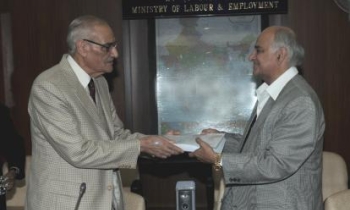NEW DELHI, August 8: Those who had predicted the fading away of the print media will have to wait slightly longer. There has been an appreciable increase in the reach of the printed word with an increase of 21 million readers between 2002 and 2005. Over the last three years, the number of readers of dailies and magazines put together (among those aged 15 years and above) has expanded from 179 million to 200 million — a growth of 4 per cent every year.
The scope of the NRS was expanded to include those aged 12 years and above but the 15 years age cut-off has been applied for the sake of comparison with NRS 2002. There is still significant scope for growth, since there are as many as 314 million people who can read and understand a particular language but do not read any publication. Affordability of newspapers and magazines is not seen as a constraint since 21 million of these literate non-readers belong to the upscale SEC A and B segments.
Significantly, the rural readership base has been increasing rapidly — of the 200 million readers, about 98 million live in rural areas. The reader base for dailies / newspapers has increased from 155 million in 2002 to 176 million this year — an increase of nearly 14 per cent. This cannot be justification enough for rejoicing since the growth of dailies is less than the literacy growth of 21 per cent in the same period.
The time spent on print media has increased over the years. An urban adult now spends on an average 17 hours a week on press and television — 4.9 hours on press and 11.8 hours on television. The time spent on radio is 10 hours a week. The time spent by the average rural adult on press and television together is 14 hours a week and that on radio is nine hours a week.
Obviously, the press has increased its share of the urban media day. Today, the average urban adult spends 42 minutes per day reading dailies and magazines and 1 hour 42 minutes watching television. Three years back, the average reading time used to be 32 minutes and the average viewing time 1 hour 40 minutes. Surprisingly, the press has increased its share of the day at the expense of television — it accounts for 30 per cent of the time spent, up from 24 per cent three years ago.
As many as seven of the top ten dailies have consistently improved their rankings in the last three years. Dainik Jagran has taken the top slot even though the previous year’s number one, Dainik Bhaskar, has grown. This is being attributed to the number of literates in Uttar Pradesh, Bihar and Jharkhand (strong Dainik Jagran markets) growing explosively — while Dainik Bhaskar has not had a strong showing in these markets.
Magazines, on the other hand, show an overall decline in the reader base, both in urban and rural India. The reach of magazines has slumped from 86 million in 2002 to 69 million in 2005. Magazines have lost as much as 19 per cent of their reach since 2002.
The growth in cable and satellite (C&S) penetration is more than twice the growth in TV-owning homes. Television now reaches 108 million Indian homes. In other words, it has crossed the 50 per cent mark of all homes for the first time and reflects a growth of 32 per cent since 2002. Homes with access to C&S jumped from 40 million in 2002 to 61 million in 2005. The growth of 53 per cent is far higher than the growth of the television market. C&S subscription, in fact, has now penetrated 56 per cent of all TV homes.
Homes with colour television sets have doubled — from 29 million to 58 million. The increment of 43 per cent is in line with the growth in C&S. While in 2002 a little over half the C&S homes had colour TV, today more than two-thirds (70 per cent) do. This, needless to say, makes the viewing pleasure of satellite channels more attractive than ever before.
The number of individuals aged 12 years and above who accessed the Internet in the last three years increased to 11 million in 2005. While 8 million of these are in urban India, nearly 3 million Internet users reside in rural India. As reach of Internet increases, the office is no longer the main place of access. As many as 34 per cent of users now surf from home and 32 per cent go to a cybercafe. Only 16 per cent access it from the workplace.
Radio, surprisingly, remains stagnant. Radio now reaches 23.1 per cent of the adult population — marginally more in rural areas (23.5 per cent). Among the 183 million adults who listened to radio, 43 per cent or 96.8 million, now tune on to any FM station — an increase of more than 100 per cent over 2002. FM has a larger audience base than Vividh Bharati (15.7 per cent compared to 11.3 per cent) in urban India.









